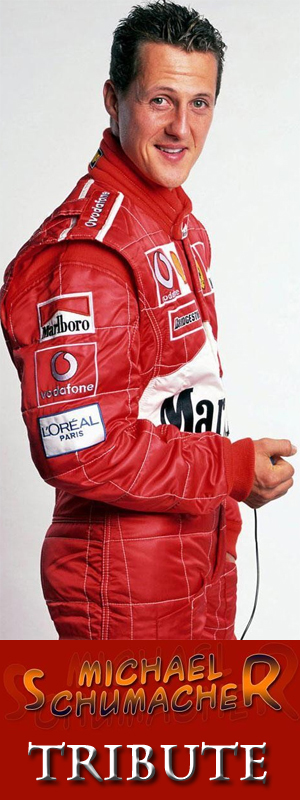The British Grand Prix is the oldest stage of the World championship. On 13th May 1950 it was the first Grand Prix in Formula 1 calendar. Since then, the British GP is always included in the calendar of the championship. Only the Italian GP can boast the same duration.
Track & statistics
Silverstone.52 laps. 306,198 kilometers. 18 turns. Aerodynamics is configured for medium/high level of clamping force. Maximum speed is 330 km/h (with DRS) and 320 km/h (without DRS).
– -with an average speed of around 225 kph (140 mph), Silverstone is considered a power circuit and one of Formula One’s fastest tracks. The majority of its layout is comprised of medium- and high-speed corners, allowing drivers to run at full throttle for 65 percent of their lap. Teams run medium to high levels of downforce to better assist with the impressive cornering speeds. These downforce levels are achievable because the circuit has relatively few long straights. Its sweeping corners provide overtaking opportunities, albeit tricky ones due to the speeds drivers can achieve.
– the iconic gold trophy awarded to winners of the British Grand Prix is the RAC Cup, and it is the oldest prize awarded in Formula One. Unlike other trophies, the winner doesn’t get to keep it. It’s returned soon after the podium celebrations.
– there are 18 turns at Silverstone, and each has its own name and backstory:
o Abbey (turn one): This flat-out first turn was named after the ancient Luffield Abbey, the remains of which were found near the corner. The abbey was founded prior to 1133 and suppressed by King Henry VI in 1493.
o Farm (turn two): This is a lazy left hander and the point where cars enter back onto the track from the pits. The origins of its name are simple – the straight used to pass close to a nearby farm.
o Village (turn three): One of the new corners introduced in 2010 following Silverstone’s redevelopment, this right hander is named after Silverstone Village, which lies to the north of the circuit.
o The Loop (turn four): This is the only corner at Silverstone named for its shape, and drivers navigate it at 90 kph (56 mph), making it the slowest corner on this high-speed track.
o Aintree (turn five): Famous for hosting the Grand National horse race, Aintree also staged the British Grand Prix in the 1950s and early 1960s and, in tribute, the left hander leading onto the Wellington Straight now bears the venue’s name.
o Wellington Straight: Formally known as the National Straight, the run down to Brooklands was renamed in 2010 when it became part of Silverstone’s new grand prix layout. The Wellington Straight takes its name from the Wellington bombers that were based at the Northamptonshire circuit during World War II. Fittingly, the straight is formed from one of the old runways.
o Brooklands (turn six): In the days of pre-war motor racing, Brooklands was Britain’s No. 1 venue. It makes sense that one of the corners at the modern-day home of British motorsport is named in the old track’s honor.
o Luffield (turn seven): Like Abbey, the long right hander was named after Luffield Chapel. Introduced to Silverstone’s grand prix layout ahead of the 1991 race, Luffield was originally two distinct corners, known as Luffield 1 and Luffield 2.
o Woodcote (turn eight): The Royal Automobile Club (RAC) was responsible for organizing the first major races at Silverstone. As such, the group had major influence in naming many of the track’s original corners. Woodcote, the sweeping right hander which used to end the lap, is named after Woodcote Park, an RAC-owned club in Surrey.
o Copse (turn nine): Silverstone is surrounded by luscious green fields and small pockets of dense woodland, knowns as copses. The quick Copse corner, which was the circuit’s first turn for nearly 60 years, passes especially close to Chapel Copse and Cheese Copse, hence its name.
o Maggotts, Becketts and Chapel (turns 10-14): Approached at around 300 kph (186 mph), Silverstone’s fastest and most iconic sequence of corners was three distinct bends until 1991. Today, they are interlinked. The opening section, Maggotts, was named for nearby Maggot Moor. Becketts and Chapel Curve, meanwhile, take their names from the medieval chapel of St. Thomas à Beckett, which was built in memory of the murdered Archbishop of Canterbury and once stood near the corners. The chapel buildings were demolished in 1943 to make way for Silverstone airfield.
o Hangar Straight: Silverstone’s use as a Royal Air Force base meant that it was once home to several large hangars. Two of the largest stood next to what became the circuit’s backstraight, which today is tackled at 325 kph (202 mph)
o Stowe (turn 15): Situated at the end of Hangar Straight, the rapid right hander has always been a challenge for drivers despite several changes over the years. Like so many other corners at Silverstone, it takes its name from a nearby landmark, Stowe School, which lies just south of the circuit.
o Vale (turn 16): Built on an airfield, Silverstone is more or less flat, which is why the most undulating piece of track, found between Stowe and Club, was named Vale, which is another word for valley. However, some say the name is simply a reflection of the fact this portion of the track sits within the district of Aylesbury Vale.
o Club (turns 17-18): Club is the track’s final corner. Like Woodcote, Club was named in honor of the RAC’s famous clubhouse in Pall Mall, London.











Leave a Reply